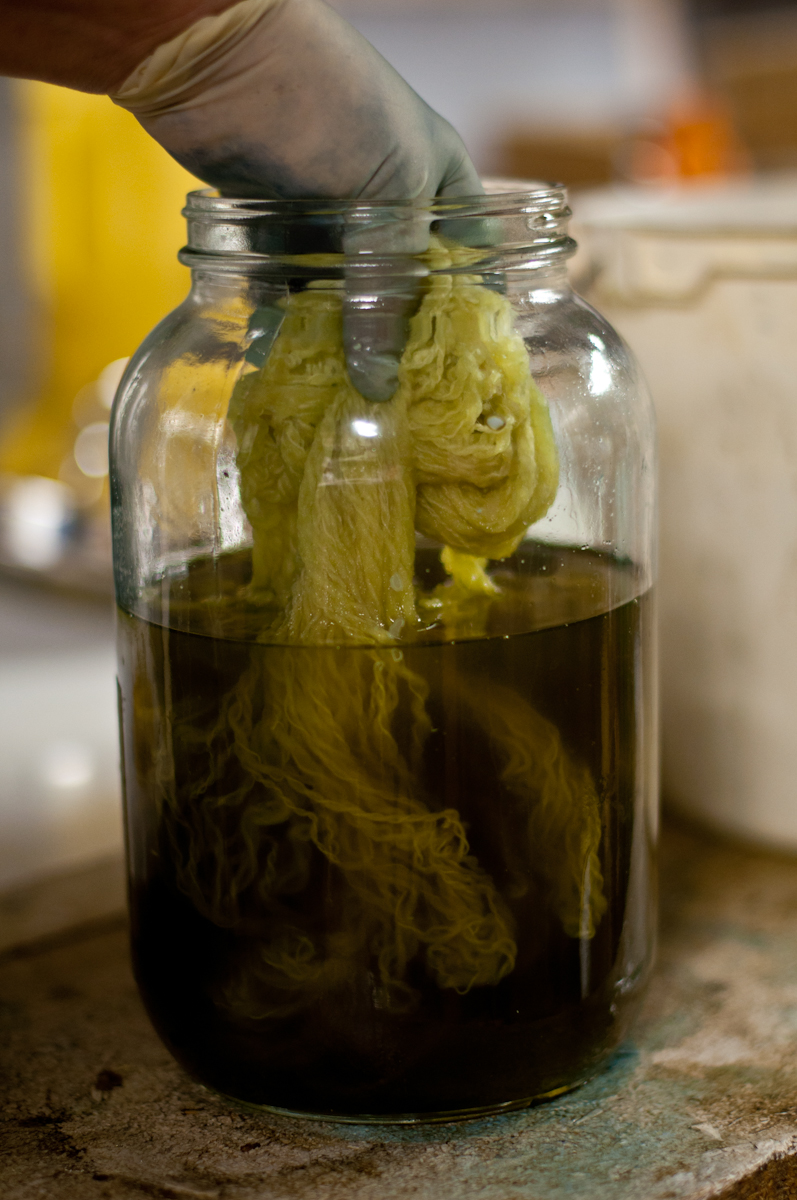Growing Blue

Planting and Growing

Harvesting the Plants



Direct Dye Processing



Now comes the tricky part. How to get that blue chemical out of the plants and useable as a dye that is light and wash fast. I chose the easiest method I could find. I just couldn't wait the months of fermentation and knowing it is a very smelly process I didn't want to run my husband off from the stench. What I did: I plucked the leaves and put them in a large pot. I added water to cover, and set it on an electric hot plate in the garage. I turned it to medium heat, as you want it to heat slowly for about 2 hours, keeping the temperature below a simmer...about 190 degrees. After about 2 hours, I turned off the heat and let it sit in the pot to cool down. It took on a metallic sheen, which I knew was correct. Then I strained it into a couple gallon jars through an old tea towel. If you dipped the fabric or yarn right in this liquid, or even simmered it, as you generally do with other natural dyes, you would get a color, but it would not be blue. Most likely green or yellow. Strange but true! You have to "reduce" the dye bath, or take the oxygen out of it. I accomplished that by using Rit Color remover. It's cheap and easily available. One and one-half tablespoons for the gallon of dye, stirred in and left to settle.
The First Dip



Now the Fun Begins...




Stitching and Resisting



Start All Over Again
